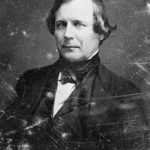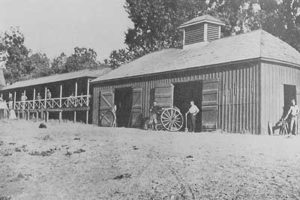Few locations in California remain as they were before the Spanish arrived but Ranchos el Tejon does. Thriving Native American villages once dotted the landscape of the present Tejon Ranch making use of the abundance of wildlife, food and water sources that existed from the valley floor to the snow-capped mountain tops.
With the establishment of a mission system, the future lands of Tejon Ranch became the northern most area of responsibility of Mission San Fernando and many of the native people were urged to come to learn new trades, provide needed services for the mission system and so that their children could learn to read and write.

With the defeat of the Spanish, Mexico began issuing the mission lands to their own people in the form of Land Grants. This process was accelerated in the 1840’s when immigrants from the eastern side of this country began to filter to the West Coast and Mexico realized they were losing control of Alta California . Four Mexican Land Grants were quickly issued in the lower Tehachapi Mountains to men of political importance. Rancho Los Alamos y Agua Caliente was granted sometime in 1843, Rancho Castaic on November 22, 1843, Rancho el Tejon two days later on November 24, 1843, and Rancho la Liebre in April of 1846.
The defeat of Mexico was followed by the discovery of gold and statehood for California . People flowed into the new state displacing what Native people remained. In 1851 three Indian reservations were established in the new state. The area from Grapevine Canyon to Tejon Canyon at the southern end of the San Joaquin Valley, located in the Tejon and Castac Land Grants, was set aside for the southern reserve but soon diminished in size to just Tejon Canyon.


In 1852, Edward F. Beale was appointed the Superintendent of Indian Affairs for the Western territories of the United States . In 1853 he began his work on the Tejon lands and named the reservation the Sebastian Indian Reserve for Senator Wm K. Sebastian who had encouraged the funding for Beale’s plans on the Reserve.
The reservation was to be a military reserve therefore Fort Tejon was established at the top of Grapevine Canyon in 1854 to control and protect the Indians from the white man who wanted to eliminate them. Located within the Castac Land Grant, Fort Tejon was built on the main roadway through California for the purpose of easy access but as well to control the lawlessness growing throughout the state. When the military relinquished the use of the post, Tejon Ranch used the buildings in their ranching operation.
Edward Beale’s next position was that of Surveyor General in the West and during that time he purchased the four land grants that now comprise Tejon Ranch. Sheep were the first industry of the ranch followed by decades of cattle raising, agricultural, oil leases and wildlife management.
About ten years after the death of his father in 1893, Truxtun Beale sold Tejon Ranch to a group of property investors from Los Angeles headed by Harry Chandler and Moses Sherman. These famous families enjoyed the Ranch as a private hunting preserve, along with many other hunt clubs, for most of the Twentieth Century.
It is rare that yet today some of Mexican Land Grants of the 1800’s still exist as they do on Ranchos El Tejon – the oldest and largest working ranch in California .
Good books relating to this subject are “View from the Ridge Route Vol III” and “Saga of Rancho El Tejon“


